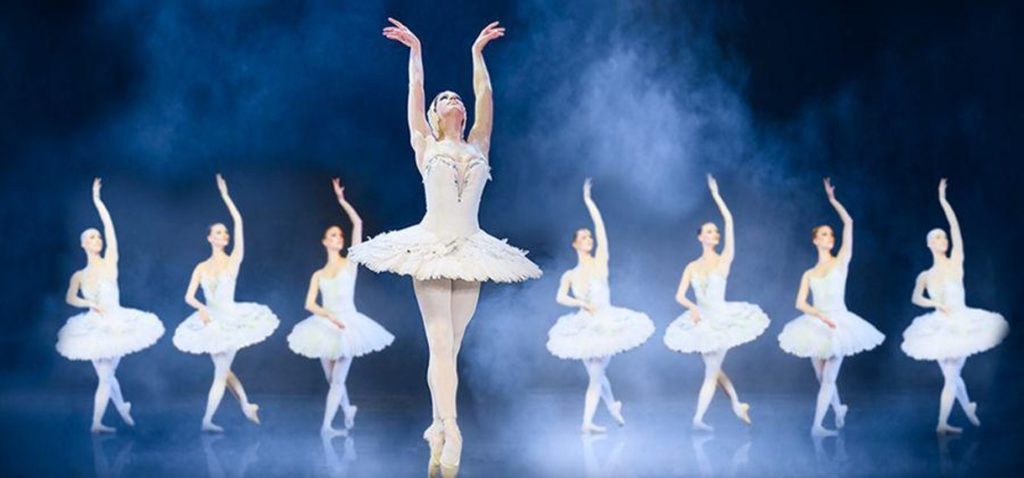New Wimbledon Theatre – 9th February (and touring)
Reviewed by Antonia Hebbert
3***
This is a ballet of two contrasting halves. The first act has scenes of village life and lots of mimed storytelling. Beautiful, beloved-by-all peasant girl Giselle falls love with Albrecht, a nobleman who is in the village incognito in order to pursue her. She thinks he is going to marry her, but he is already engaged to Countess Bathilde, who turns up in the village on an aristocratic hunting party. When Albrecht’s deception is revealed by Giselle’s jealous local admirer Hilarion, Giselle goes mad, dances wildly and falls dead.
The very different second act is set around around Giselle’s moonlit grave. This is the haunt of the Wilis (‘veelees’) – the ghosts of young women who take revenge on men by dancing them to death. (Fleur Delacourt, the Veela in the Harry Potter books, must be a relation.) They emerge around Hilarion when he goes to visit Giselle’s grave, and frighten him away. Then a repentant Albrecht arrives, and Giselle’s spirit dances with him. But instead of dancing him to death, Giselle protects Albrecht from the Wilis and thereby saves her own soul. In the meantime, the Wilis chase down Hilarion and destroy him instead.
Katerina Petrova made a very delicate and graceful Giselle, who shone throughout her transformation from happy innocence, through grief to ghostliness. Tsetso Ivanov was not so convincing as Albrecht in the first act – Pierre Gaston’s dashing, athletic Hilarion looked a better bet – but was much stronger in the second, with fine, impressive jumps. Petrova and Ivanov together gave us some really beautiful moments in this second act. The village dancing in the first act had charm, but the corps de ballet came into its own as the Wilis – this was a big group of dancers, and lovely to watch. They were led by Francesca Busquet (Queen of the Wilis), Pauline Faget and Megan Reid (excellent). Giulia Visali didn’t get to dance as Countess Bathilde, but had imposing presence and carried the story forward well.
The scenery was traditional in style. Act 1 had village houses and a backdrop of scenic landscape. Act 2 suggested forest, with a backdrop of graves out of which we see a film of Wilis appearing. This seemed ludicrous to me, but my partner liked it as a linking device that helped explain the Wilis. It was great to have a sizeable orchestra for Adolphe Adam’s 1841 music for this ballet, but the sound seemed thin, perhaps because the orchestra pit is so deep at this grand Edwardian theatre.
Varna International Ballet is an offshoot of Varna State Opera, which was founded in 1947 in Varna, Bulgaria. It draws dancers from all over Europe, including the UK, and they’re on tour with Giselle, Swan Lake, Coppelia and The Nutcracker for several more weeks.

